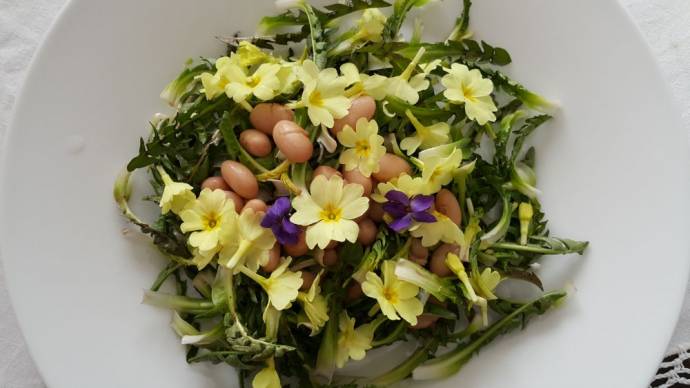April 6, 2018
Dandelion (Slovenian: regrat) is a well-known herbal remedy, especially in Europe, North America and China. Unlike similar herbs, all parts of this plant are used to relieve various health problems and dandelion is even believed to cure or prevent some of the most serious diseases such as cancer.
This is so because dandelion is very rich in various nutrients, antioxidants, minerals, vitamins and so on, and therefore helps fighting infections, anaemia, kidney, liver and bile problems and, being a mild laxative, works beneficially on digestion as well.
The plant (dandelion comes from French, dent de lion, meaning “lion’s tooth”) got its Latin name Taraxacum after its plant’s bitter taraxalisin, a serine proteinase found in the latex of dandelion roots. Traxalisin is at its peak production in spring, at the beginning of plant development, when leaves are already out but still tender enough to be used in salads as well.
Dandelion roots, dried, roasted and ground, have also been used as a coffee substitute, although the experts suggest that for full health benefits roasting can also be skipped.
The most common and also most widespread consumption of dandelion in Slovenia is in using its still relatively tender spring leaves in salads. We are currently in the peak dandelion season, so you better hurry if you still want to get some of its culinary use, although the plant keeps its health benefits throughout the year. If the roots are high on bitter in spring, they are high on inulin in fall. Inulin is a polysaccharide which does not elevate blood sugar levels and may be helpful in the management of diabetes, stimulate the growth of bacteria in the gut and also reduce appetite.
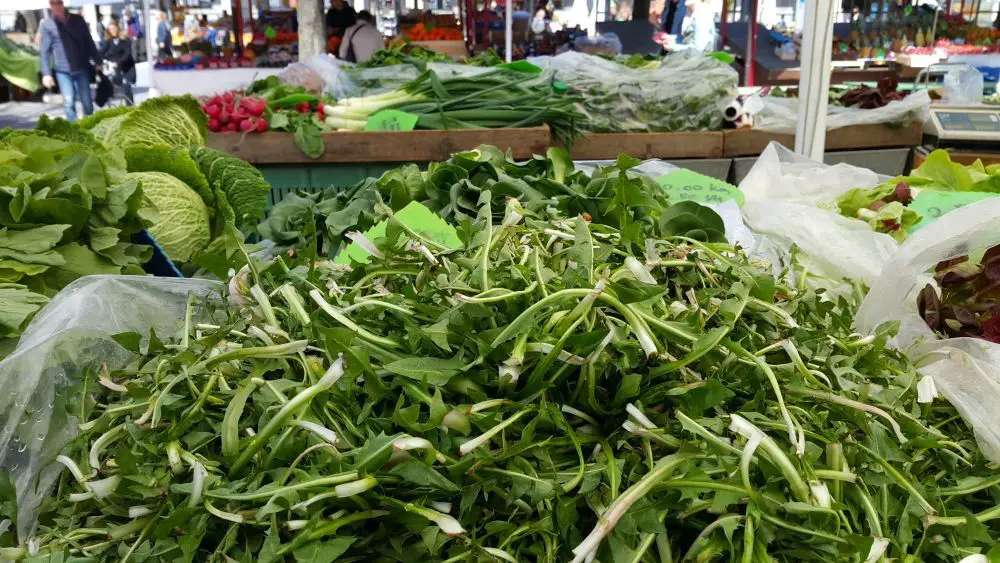
Cleaned dandelion at Ljubljana marketplace on Friday, April 6, 2018
As suggested in the picture above, dandelion can be currently purchased at local marketplaces, or you can go pick it yourself. The plant can be found in abundance in pretty much every Slovenian field, which is why it is sometimes considered as a weed.
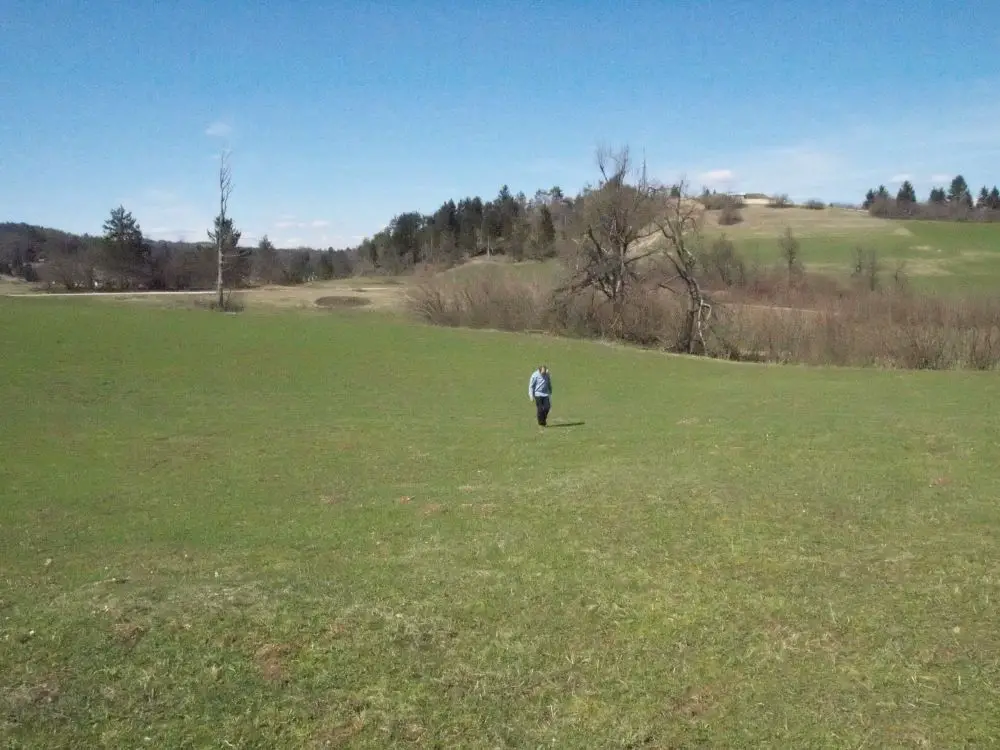
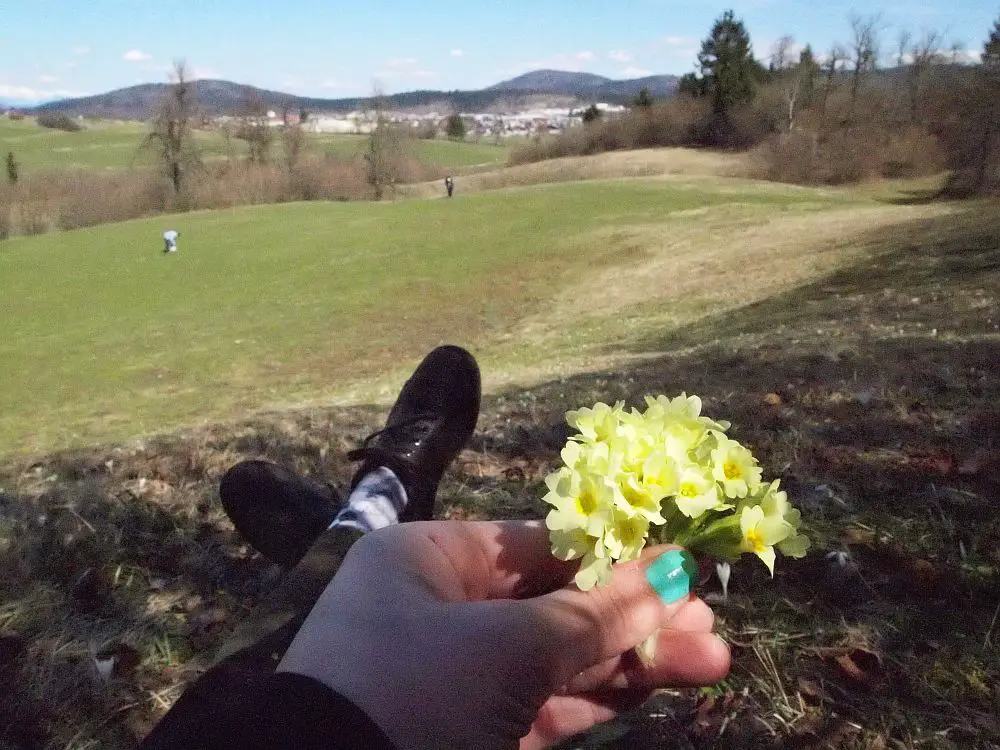
A field in Logatec, where we picked our bag of dandelion and a bunch of primroses which also ended up on our plate
When you head towards your dandelion field, however, make sure it has not been heavily treated with manure or other fertilizers. Also, better to find a place away from the common walking paths, as they often serve as dog toilets.
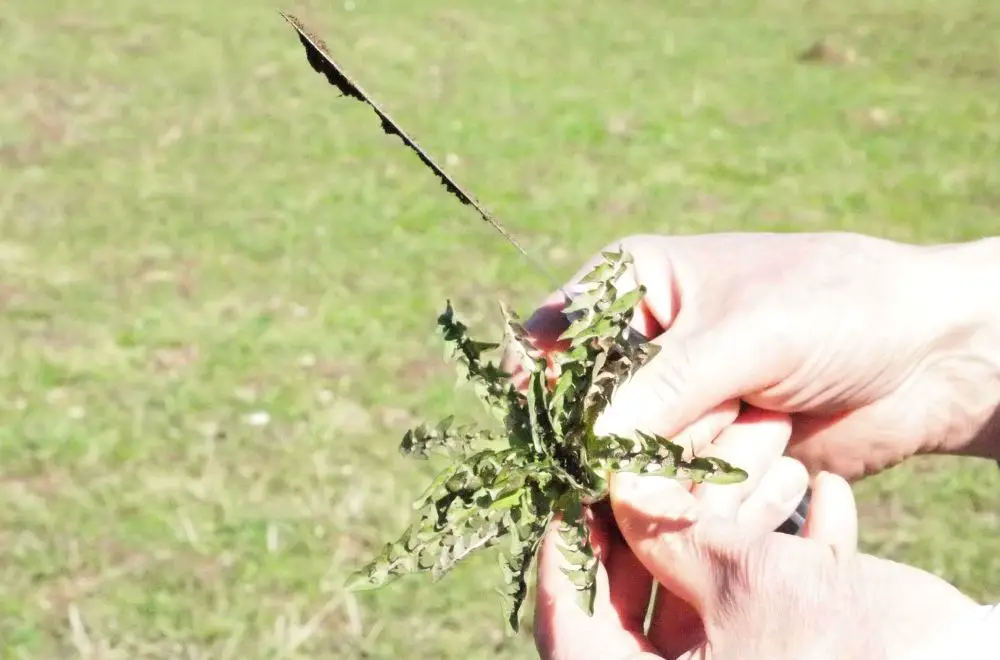
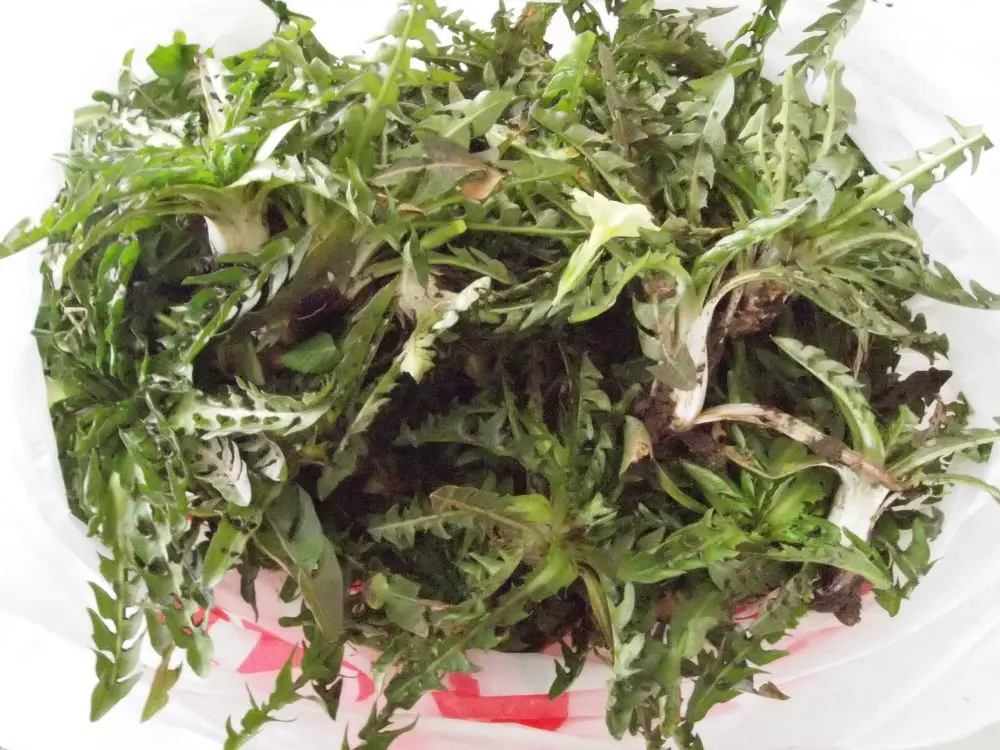
After the yield is home, it needs to be thoroughly cleaned. Pull the brownish surrounding leaves back and cut them off together with the base so that the leaves separate. Then your dandelion needs to be washed until the water is clear. We picked our dandelion after the rain so it was quite dirty, and it took about 8-9 baths before it was clean.
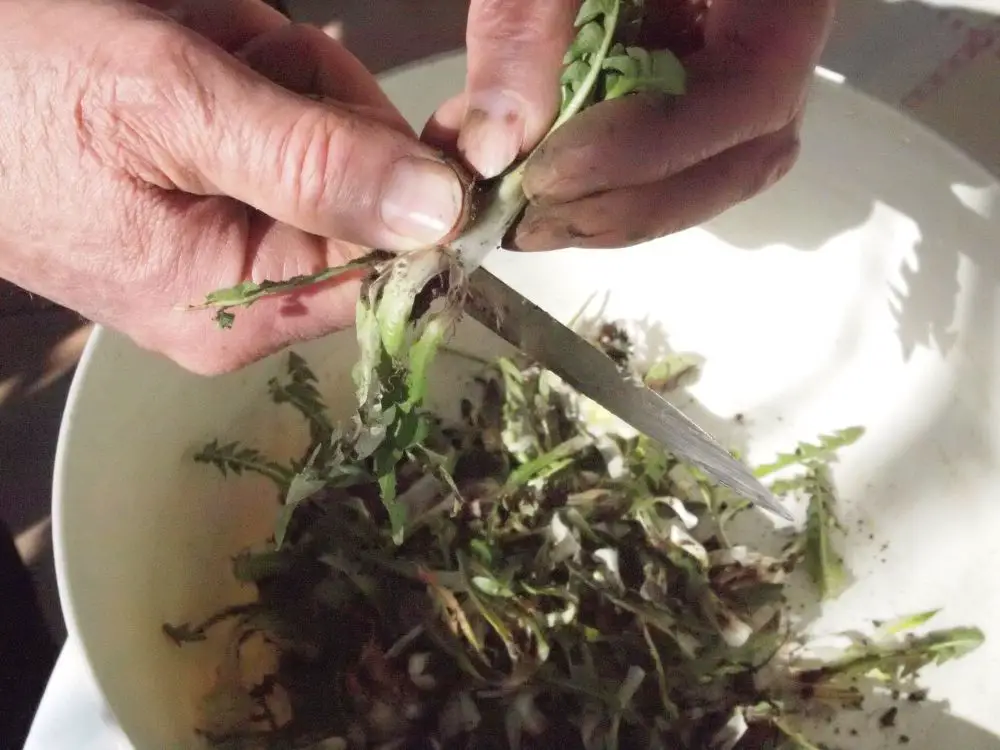
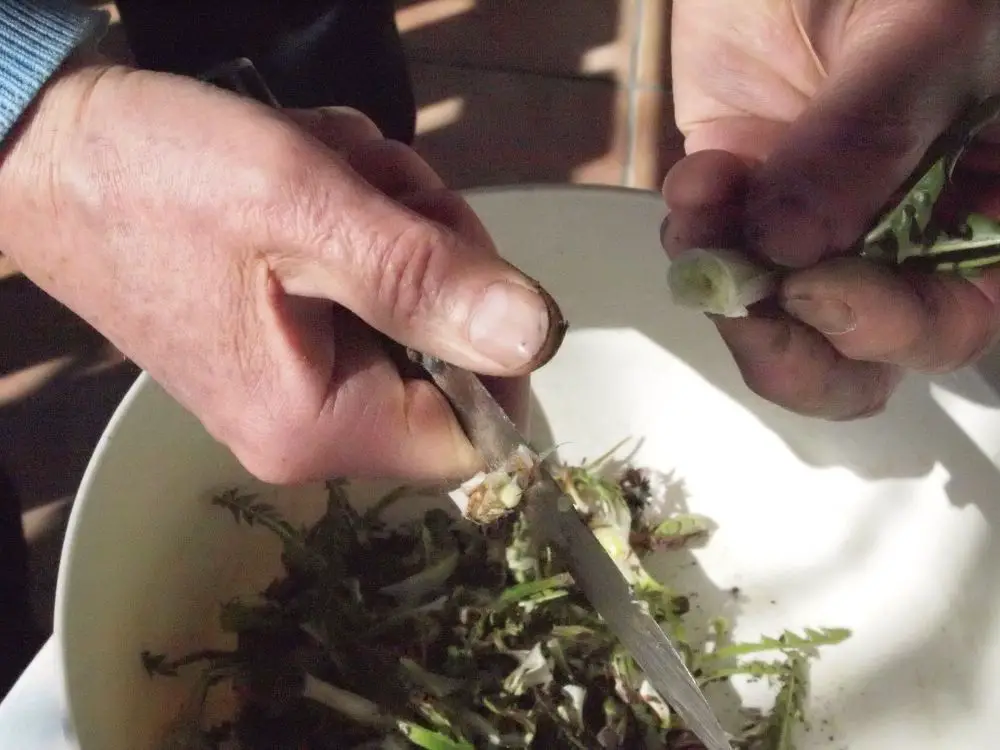
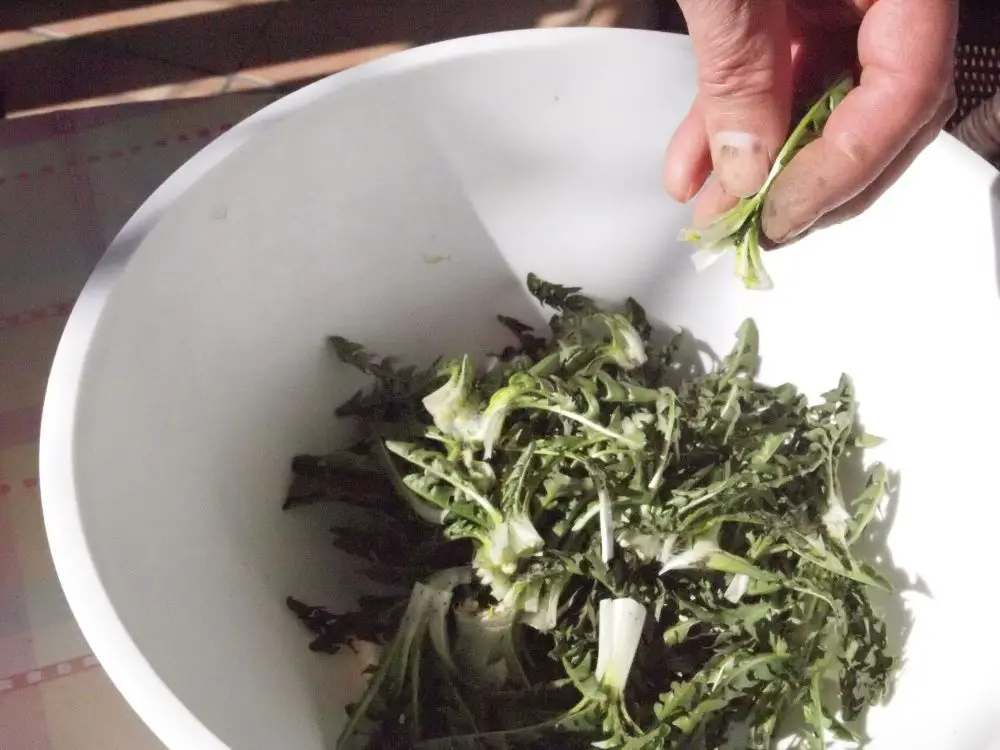
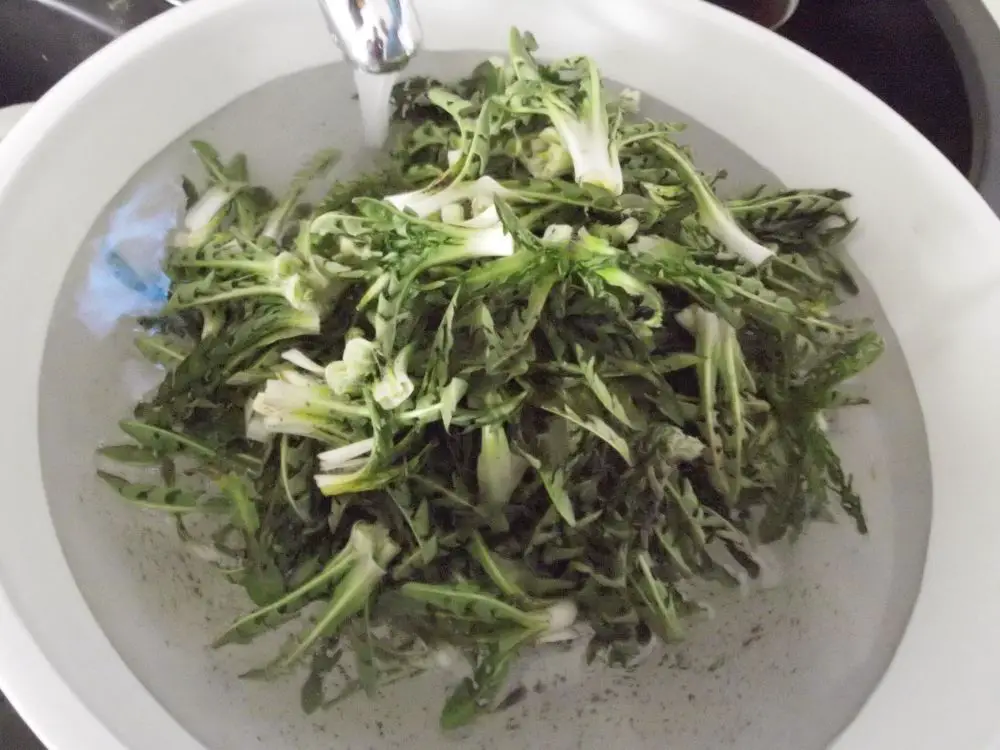
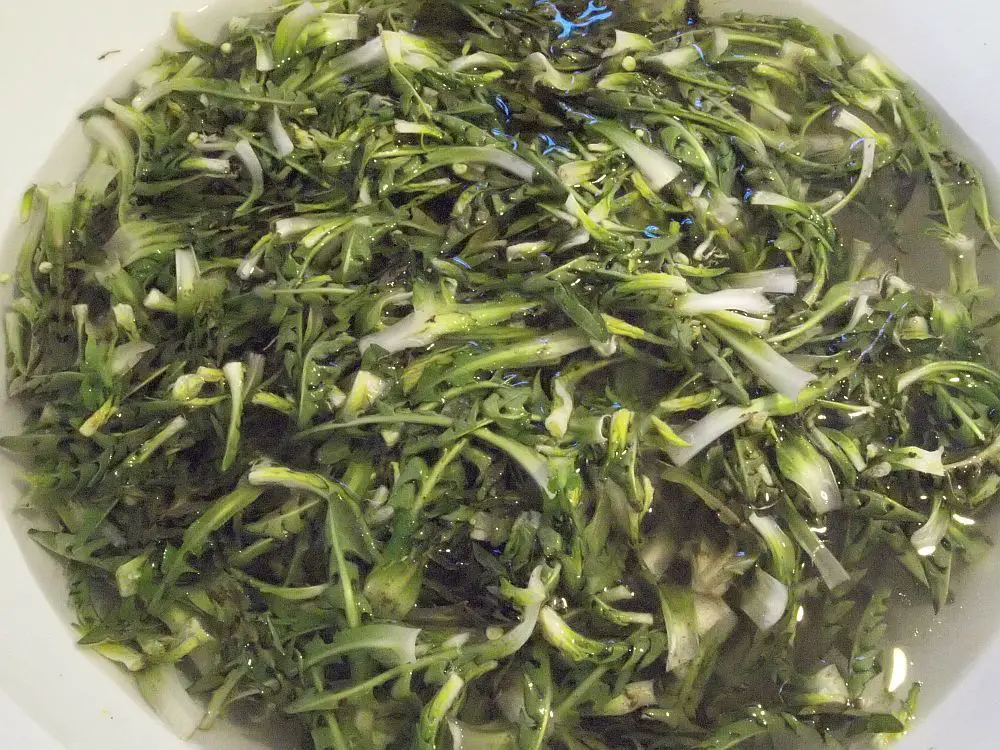
Now the dandelion is ready to be made into a salad or a side dish. If you mix it with cooked potatoes and season it with standard local salad seasoning (chopped garlic, salt, vinegar and olive oil), it can serve as a side dish for pretty much anything, in our case, fish sticks.
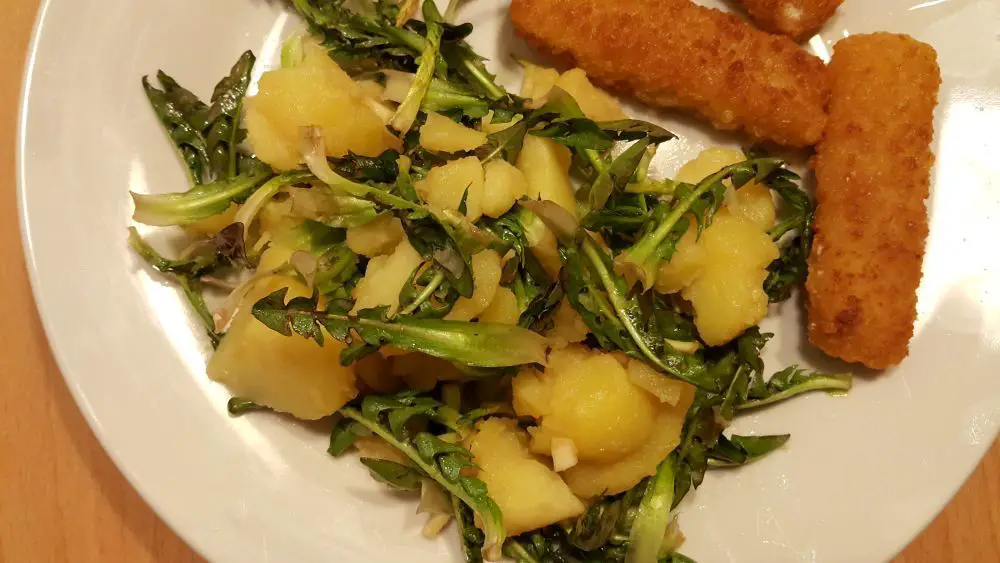
Another common ingredient of a Slovenian dandelion salad is cooked eggs. If you believe your Easter eggs are still edible, for example, this is an opportunity to finally eat them. Or perhaps just throw them away and make some fresh boiled eggs instead.
Also, dandelion can be nicely combined with cooked beans. And since we found so many pretty flowers growing around the bushes next to the field, we put some of them on the top of our salad. Primroses were delicious and violets tasted like they smelled – divine. Common daisies were not that tasty, so we took them off the plate.
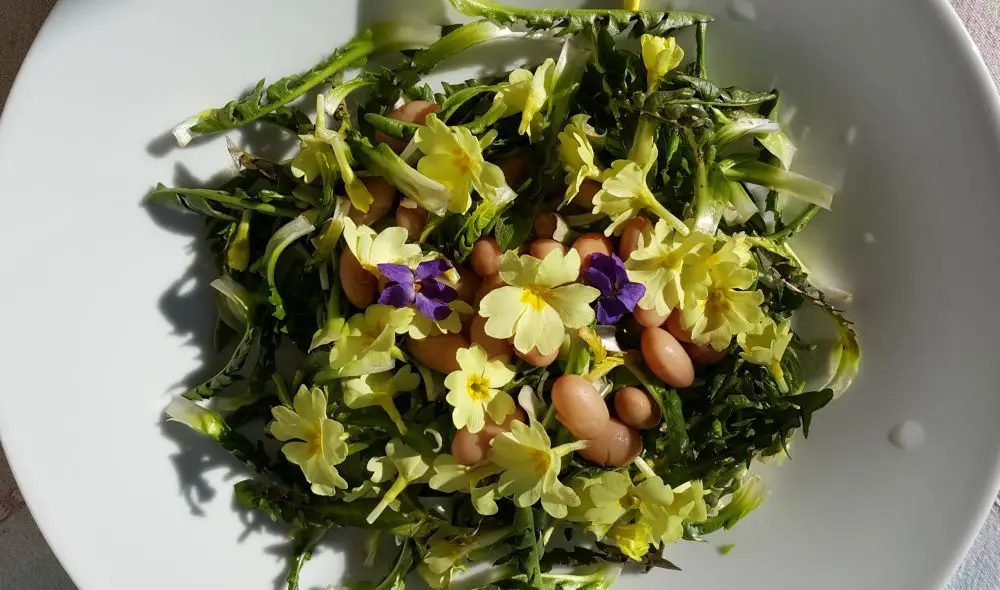
Just make sure you don’t eat any snow drops – they are poisonous.
Dober tek!

